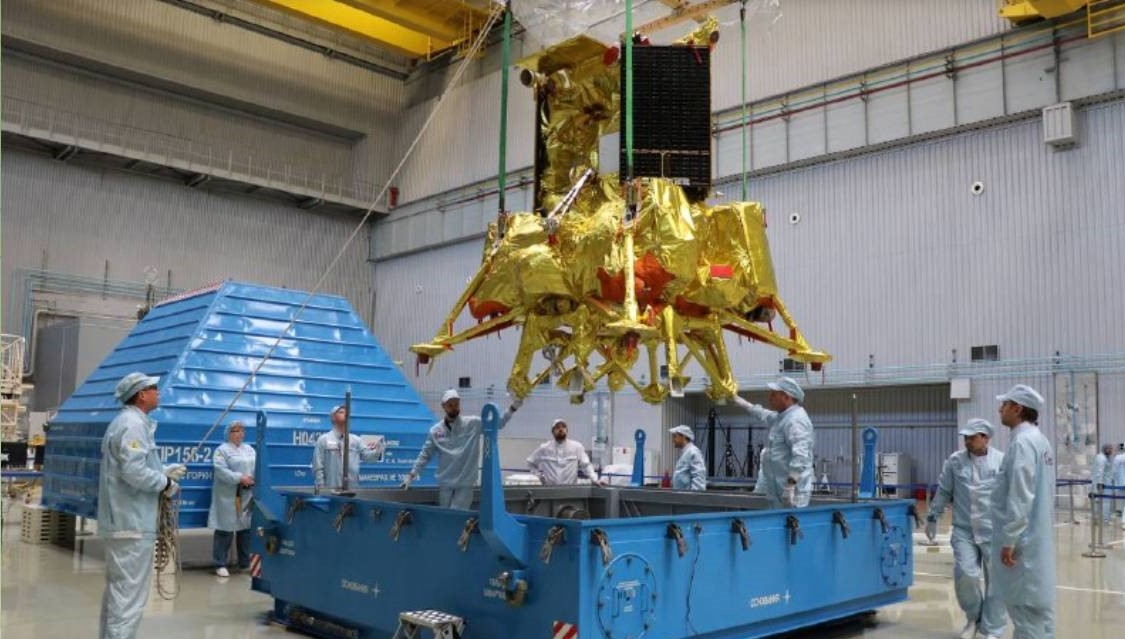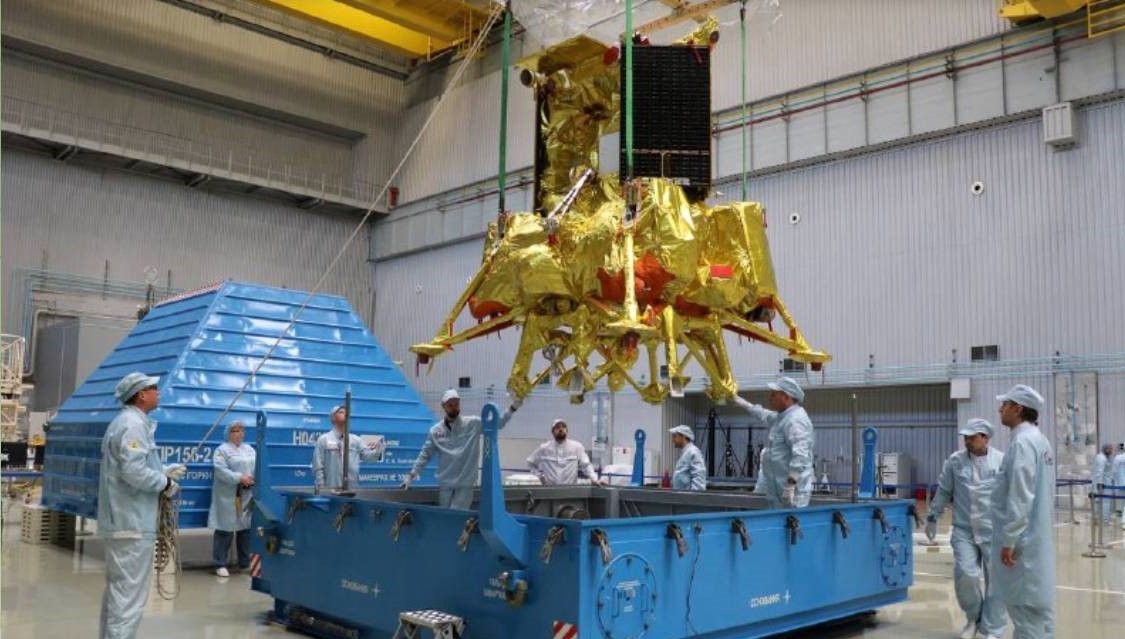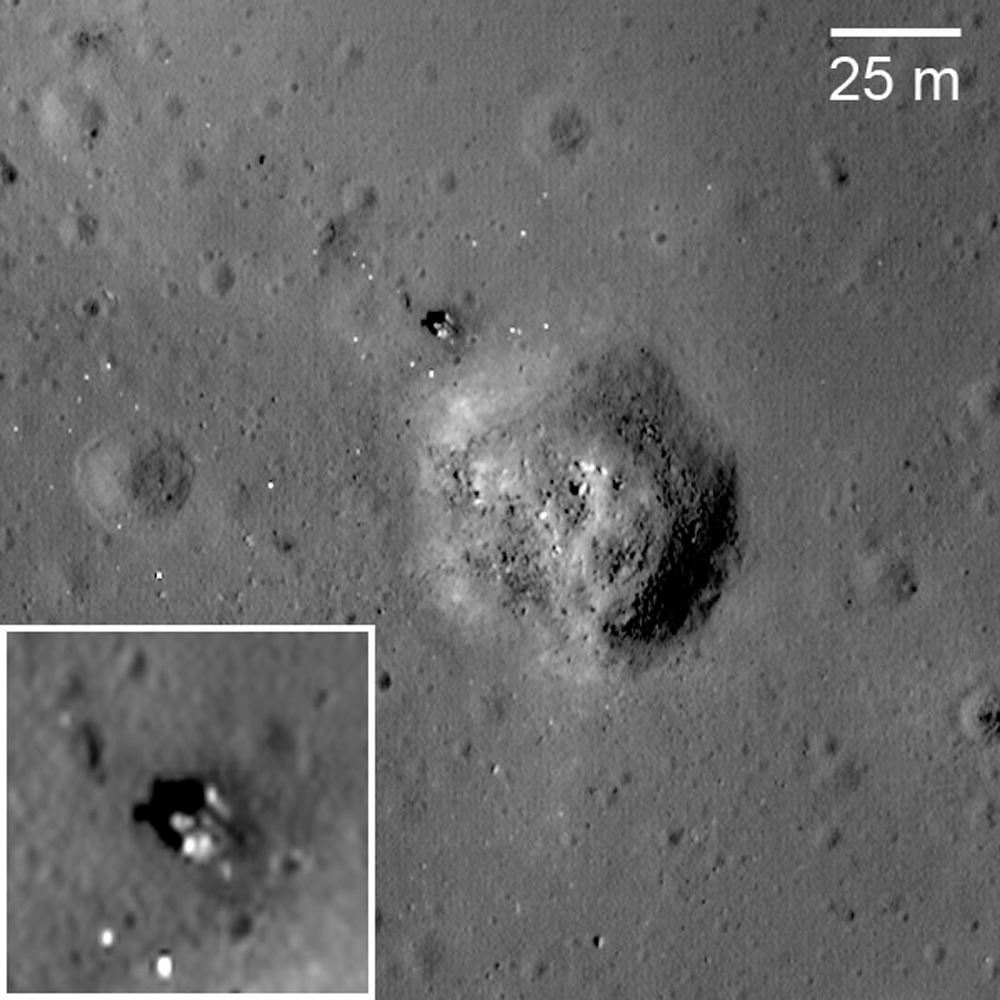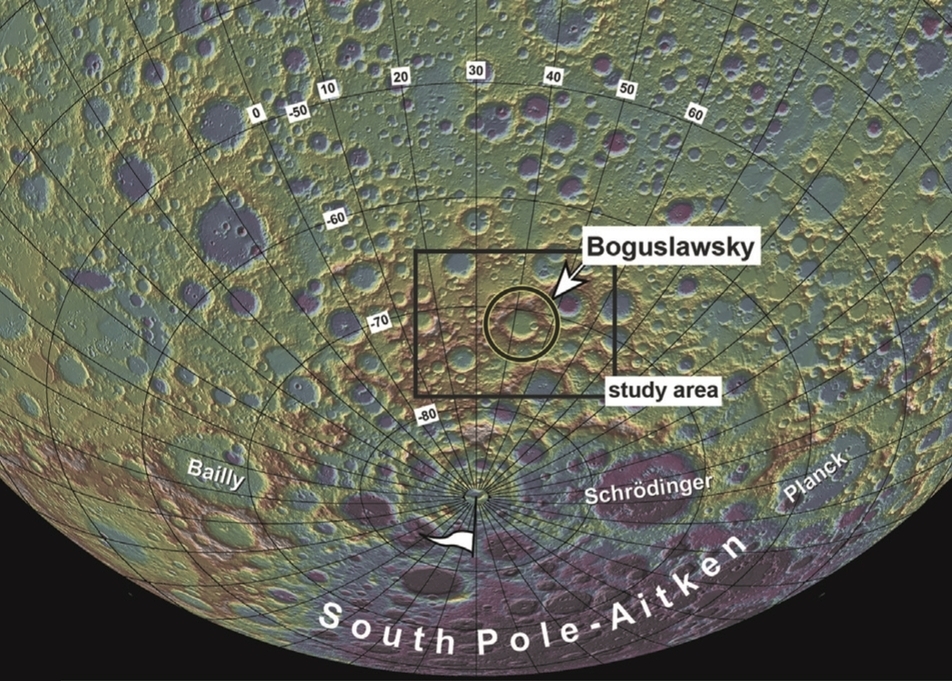JaguarWarrior
Senior Member
- Joined
- Jul 21, 2023
- Messages
- 5,224
- Likes
- 2,155

Russia’s Return to the Moon With Luna-25: High Risk, High Stakes
With Luna-25, an upcoming Roscosmos lunar lander mission, Russia prepares to visit the Moon for the first time in nearly 50 years.
under Luna-25, Moon, Roscosmos, Russia

Russia’s Luna-25 is packed up for shipping to the launch area, the Vostochny cosmodrome.
Image credit: Roscosmos.
Russia is set to reactivate the country’s robotic investigation of the Moon, picking up from its former Soviet Union days of heady and milestone-making lunar exploration. Luna-25, an upcoming Russian lunar lander mission, is reportedly targeted for an August 11 sendoff, departing from the Vostochny cosmodrome atop a Soyuz-2.1b carrier rocket with a Fregat upper stage.
In terms of landing spots, Luna-25 is fundamentally different from its predecessors. Past Soviet lunar probes touched down on the Moon in the equatorial zone. This new robotic lander is slated to gently come to a full stop in the circumpolar region of the Moon that offers a complex landscape.
Russia’s space agency, Roscosmos, reports that the main task of the mission is to develop the basic technologies for a soft landing in the circumpolar region and conduct contact studies of the south pole of the Moon.
Pioneering spacecraft builder, NPO Lavochkin, designed, built and tested Luna-25.
Sea of Crises
Luna-25 continues the series of the former Soviet Union’s lunar exploration activities that ended in 1976. Back then, Luna-24 successfully rocketed back to Earth carrying about 170 grams of lunar soil, gathering the precious collectibles from the Moon’s Mare Crisium (Sea of Crises). However, Russia has not returned to the Moon in the nearly 50 years since.
The Luna-25 mission is to be followed by other craft, after which Russia plans to start deploying a full-fledged scientific station on the Moon in collaboration with China.
 Russia’s last mission to the Moon, Luna-24 in 1976, rocketed back samples from the volcanic plains of Mare Crisium. Lower left enlargement shows the Moon lander as observed by NASA’s Lunar Reconnaissance Orbiter. Image credit: NASA/GSFC/Arizona State University.
Russia’s last mission to the Moon, Luna-24 in 1976, rocketed back samples from the volcanic plains of Mare Crisium. Lower left enlargement shows the Moon lander as observed by NASA’s Lunar Reconnaissance Orbiter. Image credit: NASA/GSFC/Arizona State University.Earlier, prior to Russia’s intrusion into Ukraine, the European Space Agency (ESA) was to provide the European Pilot-D camera built specifically for precisely landing Luna-25 on the Moon. Due to the conflict, ESA cancelled the camera cooperation, among a number of other collaborative space projects.
Restore confidence
“This launch is important, both for historical and forward-looking reasons. It means a lot,” Brian Harvey told SpaceRef. Harvey is a noted author and space historian in Ireland with an eye on past Soviet Union, now Russian, space exploits.
“This mission has been one of the longest-ever in preparation,” said Harvey, for the original idea of such a return-to-the-Moon mission can be traced to 1992 and was even called Luna 92, he said, and it has been on-off ever since.
“So this will be a test of Russia’s ability to undertake Moon missions again and, if successful, will restore its confidence in a field in which it once led the world,” Harvey told SpaceRef.
Partnered with China
Looking forward, Harvey said that Russia is a somewhat junior partner with China in that country’s quest to establish an International Lunar Research Station, a facility that China has been racing to establish on the Moon.
This commits China and Russia each to three automated precursor missions, Chang’e-6, 7, and 8; and Luna 25, 26, and 27, respectively, Harvey pointed out, “so Russia will be keen to demonstrate that it can meet its side of these commitments.”
Harvey said that the Luna-25 mission involves a new type of spacecraft and Russian space engineers have no recent comparable experience to guide them. This is also the first use of the Soyuz 2 rocket for a lunar mission and the first such mission to take off from the Vostochny space complex — putting that many “firsts” together makes the mission a bit of a gambit.
High risk
“This mission is definitely high risk,” added Harvey, “but the testing of Luna-25 has been exhaustive, and repeatedly delayed, so that the engineers can be sure that everything has been done to maximize a successful outcome,” Russia’s launch record has been amongst the most reliable of the space powers in recent years, he said.
Should Luna-25 fail, Harvey said, it’s not clear what repercussions would be. “Because of its political isolation as a result of the Ukraine war, Russia will more likely choose to demonstrate that it can continue to restart and maintain a lunar program, and show some kind of parity with China.”
A Luna-25 success will be “a big boost in confidence” and offers a green light to Luna-26 and 27, and a more visible Russian role in putting in place the International Lunar Research Station, Harvey said.
Critical target
Luna-25 is to set down on the floor of Boguslawsky crater, a feature that is over 60 miles (100 kilometers) in diameter.
“Successful landing and operations of Luna-25 will mark a renaissance of the phenomenally successful Luna program of landers, orbiters, rovers, sample return missions,” James Head of Brown University’s Department of Earth, Environmental and Planetary Sciences told SpaceRef.
 Topographic map of the southern sub-polar region of the Moon showing the location of Boguslawsky crater. Image credit: Ivanov et al., 2015 via Arizona State University/LROC.
Topographic map of the southern sub-polar region of the Moon showing the location of Boguslawsky crater. Image credit: Ivanov et al., 2015 via Arizona State University/LROC.Head explained that, given a safe and sound touchdown on the Moon, Luna-25 can reveal important insight into future exploration of the “geologically complex and diverse south circumpolar region, with its challenging solar illumination and surface temperature extremes.”
Head explained that, although its not a permanently shadowed crater, Boguslawsky offers a critical target to understand the nature and origin of ancient “crater fill,” be it the result of volcanic or mobilized ejecta from nearby impact craters.
In addition, Head said that a Boguslawsky bonus is showcasing the suitability of high latitude, circumpolar crater floors to ensure safe landing sites in the future. The Luna-25 mission will also probe the subsurface and assess the ease of both robotic and human sample collection and processing efforts, he added, in anticipation of future missions to sample and potentially return ice-rich materials.
Exciting times
“Luna 25 has been a long time coming,” said Brad Jolliff, director of the McDonnell Center for the Space Sciences at Washington University.
“Scientifically, I am interested to see what will be accomplished with the Luna-25 lander, going to a south-polar site, and its instrument payload,” Jolliff told SpaceRef. “I am particularly interested in what will be done and found with the active neutron and gamma ray analysis, the laser mass-spectrometer, the infrared spectrometer, and the thermal properties experiment.”
“These are exciting times,” Jolliff continued, with India’s now en route Chandrayaan-3 lunar lander/rover, NASA’s forthcoming VIPER Moon rover mission, and Russia’s Luna-25, he said, all aiming to obtain ground truth for south circumpolar locations and possible ice in the regolith.
On a personal note, Jolliff said that he’s heartened to see Russia back in lunar exploration, “but the current geopolitical situation is frustrating because it is thwarting any collaboration between the US lunar science community and Russian colleagues. I have had fruitful collaborations with Russian colleagues in the past decade, so I am disappointed with the current situation.” Of course, as some recent missions have shown, doing things on the Moon that involve safe landing are still difficult, Jolliff concluded. “I wish for Roscosmos and our Russian lunar-science colleagues a successful mission. I hope they will remember the lessons from 50 years ago!”
